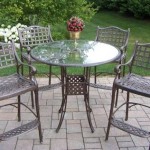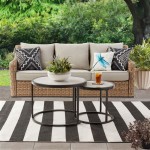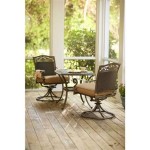Essential Aspects of Glaze Furniture Rehab Ideas
Glaze furniture rehab ideas can revitalize old or outdated pieces, giving them a fresh and updated look. Understanding the essential aspects of glaze furniture rehab is crucial for achieving successful results, ensuring a renewed piece that complements your home décor. This article explores the key aspects to consider, providing insights into the processes and techniques involved in glaze furniture rehab.
Planning and Preparation
Meticulous planning and preparation lay the foundation for a successful glaze furniture rehab project. Begin by thoroughly cleaning the furniture piece to remove any dirt or debris that may interfere with the adhering of the glaze. Next, determine the desired finish, whether it's a glossy shine or a more subtle matte texture. Choose the appropriate glaze product based on the desired effect and surface type. Ensure the work area is well-ventilated and protected from dust and fumes.
Surface Preparation
Proper surface preparation is essential for ensuring that the glaze adheres evenly and smoothly. Sand the furniture piece to remove any existing finish or imperfections. Use fine-grit sandpaper for delicate surfaces and medium-grit sandpaper for more durable surfaces. Once sanded, clean the surface thoroughly to remove dust and residue.
Glazing Techniques
Glazing techniques vary depending on the desired finish and the type of glaze used. For a smooth and even finish, apply the glaze in thin, even coats using a brush or sponge. Allow each coat to dry completely before applying the next. To create a more textured finish, apply the glaze in thicker layers or use a stippling brush to create brushstrokes. Experiment with different techniques to achieve the desired effect.
Drying and Curing
Proper drying and curing are crucial for ensuring the glaze's durability. Allow the glazed furniture piece to dry completely in a well-ventilated area. Follow the manufacturer's instructions for curing times, which can vary depending on the type of glaze used. Once cured, the glaze will be hard and durable, providing a protective and decorative finish to the furniture piece.
Finishing Touches
To enhance the glaze finish and protect it from wear and tear, consider applying a clear topcoat. Choose a topcoat that is compatible with the glaze used and apply it according to the manufacturer's instructions. This final step will add an extra layer of protection and give the furniture piece a polished and professional finish.
Conclusion
Glaze furniture rehab offers endless possibilities to transform old or outdated pieces into stylish and functional additions to your home décor. By understanding the essential aspects of glaze furniture rehab, including planning and preparation, surface preparation, glazing techniques, drying and curing, and finishing touches, you can achieve successful results that will breathe new life into your furniture. With careful planning and execution, you can create unique and personalized pieces that add character and charm to your living space.

Glaze Furniture Rehab Ideas Instant Facelift For Old Furnitures Painted Diy

Glaze Furniture Rehab Ideas Instant Facelift For Old Furnitures Diy Painting

Glaze Furniture Rehab Ideas Instant Facelift For Old Furnitures Paint Painted Restoration

Glaze Furniture Rehab Ideas Instant Facelift For Old Furnitures Diy Kitchen Table Makeover

Glaze Furniture Rehab Ideas Instant Facelift For Old Furnitures Diy

Glaze Furniture Rehab Ideas Instant Facelift For Old Furnitures Chalk Paint Recipe Makeover Shabby Chic

How To White Glaze Furniture Three Coats Of Charm

35 Stunning Diy Painted Furniture Ideas Before And After Reveals

20 Refurbished Furniture Ideas And Makeovers Shabbyfufu Com

How To Glaze Your Furniture
Related Posts








